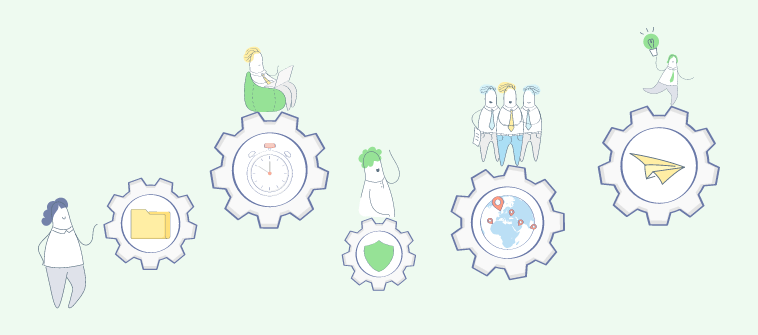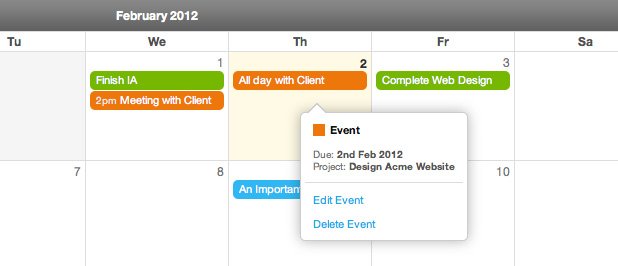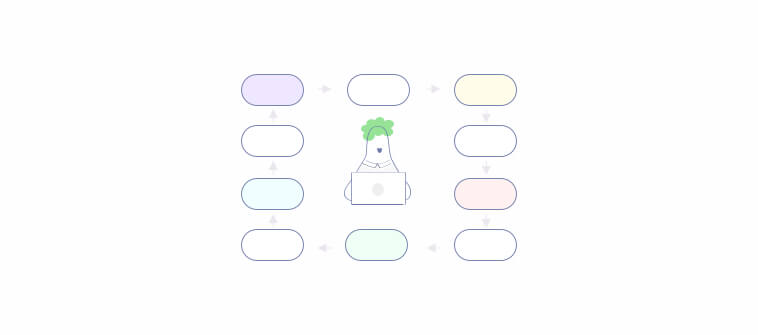Wondering how choosing the agile methodology for mobile app development can simplify the process?
Let’s see how!
Meet David. He’s a project manager tasked to deliver a high-level app development project within the set timeframe. The catch? There’s no predefined output yet!
Sounds unrealistic? Not really.
Most mobile app development projects evolve as they progress. New features are added, and changes are made almost daily to existing functionalities to suit real-time market requirements.
And this is where agile planning and management can help.
So, keep reading as we slice and dice ‘agile methodology for mobile app development projects.’ Here we go!
What Is Agile Methodology?
Let’s begin by understanding what agile methodology is.
‘Agile’ literally means to be quick and fast. And that’s what the agile methodology principle thrives on.
In the agile development process, you segregate the complete process into different development cycles or iterations. This requires you to divide tasks into short phases that operate as distinct modules. You then frequently assess and redevelop these modules or tasks in collaboration with different teams and departments. This way, the entire project becomes an integration of various tasks or modules.
Simply put, agile methodology thrives on adaptive project framework and cross-functional teamwork. This helps everyone in the team to respond quickly and deliver value to the end consumers or clientele.
Agile Methodology Frameworks
The agile methodology offers four frameworks – Scrum, Kanban, Extreme Programming, and Adaptive Project Framework. Let’s look at these here.
1. Scrum
Scrum is an agile methodology framework that works well for projects with unclear outcomes. This means that the project evolves as it progresses. So there will be a lot of improvements involved, and the result will become clearer only when it’s nearing completion.
To implement Scrum, you must break down all project tasks into smaller, more manageable chunks called Sprints. There is a Scrum Master who is responsible for leading the team members within a Sprint. The Scrum Master heads daily Scrum meetings with all team members.
These meetings help discuss roadblocks and areas of improvement collectively to find quick solutions. You then prioritize tasks and delegate it to team members daily as per the need of the sprint and the overall project.
Read Also: Best Scrum Tools for Effective Project Management
2. Kanban
Kanban is a visual agile methodology framework. This framework is perfect for when you want transparency at every stage of the project. You can divide a project into workflows and track progress by tracking a particular task’s stage.
You use a Kanban board to outline everything in Kanban. There are workflow columns that indicate the stages of a project. These workflows may be “In Progress,” “Under Review,” or “Done” and indicate the flow of tasks right from initiation to completion.
Each column consists of task cards. The task cards hold every information about a task – task title, its users, due dates, attached files, percentage of progress, etc.
Thus, the Kanban methodology helps visualize the workflows. Each task card moves through different workflow columns depending on how it progresses. For example, a task card named ‘Creating newsletters for clients’, currently in the ‘In Progress’ column, will move to the ‘Under Review’ column when you send it for approval. The card will then be sent to the ‘Done’ column when approved and marked good to go by the concerned stakeholders.
Another crucial thing about Kanban is that it allows you to set limits for work in progress. This means you can control the number of tasks your team members work on at any given time. This helps optimize resources, ensuring no resource faces burnout.
Read Also: 20 Best Kanban Board Software for 2025
3. Extreme Programming
In this methodology, the team members and the consumer are actively involved in building the project. The process relies on interactive and continuous releases of deliverables.
Team members work on the deliverables as per the required output. Since teams carry out work regularly, a part of the deliverable is worked on and sent to the customer for feedback. The customer reviews the work and suggests changes to the product. These suggestions or the changes required are incorporated into the deliverables right away. Once done, you initiate the next iteration, and a similar pattern of reviewal and changes follows.
So, collaboration holds a significant value in Extreme Programming. The team and the consumer work together to produce results aligned with the expected outcome. Also, since many changes are involved while working on the project, team members, stakeholders, and consumers must work together to extract maximum efficiency throughout the project.
Read Also: 12 Best Project Management Techniques to Use for 2023
4. Adaptive Project Framework
As its name suggests, the Adaptive Project Framework adapts to evolving project requirements.
In this methodology, project solutions are uncertain, and you may be required to alter your project deliverables. Simply put, you might have to improve set workflows and processes to deliver the set outcome.
Thus, you may change your course of action and move forward with a completely new action plan, embracing change with flexibility! Also, the reasons for changing requirements can be anything from evolving market requirements to evolving client preferences.
So do you need to adhere to just one framework for managing projects? Not necessarily. You can adopt any of these frameworks or use them in combination for different projects and activities.
Read Also: 10 Smart Ways to Improve Project Profitability
How Does Agile Methodology for Mobile App Development Work?
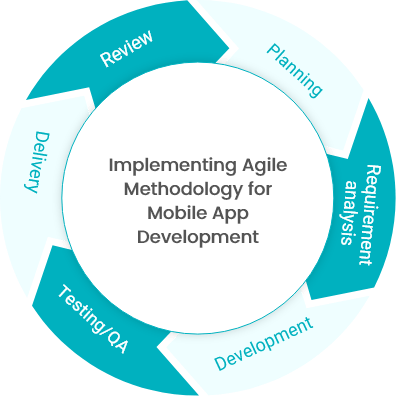
Agile methodology for mobile app development can prove game-changing for your business.
But how do you go forward to implement it across your organization?
Here’s a step-by-step process for following agile methodology.
- Planning: A robust plan is the first step to successful projects. A plan helps outline the to-dos for a smooth-sailing project. While incorporating the agile methodology for android application, you plan for each sprint. What are the deliverables you wish to take up in each sprint? What are the tasks you need to work on from start to finish? These are some questions you must consider during your routine team meetings. You must also identify the important sprints right at the beginning.
- Requirement analysis: Next, you must analyze the requirements for each sprint and the overall app development process. Which types of resources will you need? How many of each do you need? In this step, you also delegate tasks to users to define a crystal-clear workflow. This further helps you assess whether there is any scope for optimizing workflows and extracting maximum benefit.
- Development: This is where the real work happens. Team members set out to work on the tasks delegated to them. But, undeniably, keeping track of everything in agile applications development can be tricky. This is because priorities change too quickly, and direct resources to different tasks on the fly. So, how do you simplify things for your team as a project and team manager?
An agile project management software offers you a complete solution to help you ride out the waves as they come.
It helps tackle new requirements while ensuring real-time transparency within teams. All you have to do is plan and lay out your mobile app development process on the tool’s dashboard. So, you create workflows that define the list of tasks you must complete for product success. Also, you can delegate tasks to team members and specify a due date for completing tasks.
While working with agile development, the tool allows you to adjust workflows quickly with just a few clicks. This means you can easily prioritize new tasks under each sprint using tags and delegate new tasks to team members. This way, team members can check which tasks to work on and when. Thus, this leaves no room for ‘But I thought…’ or ‘I don’t remember you assigning me this task.’ queries between you and the team members.
Also, as a manager, using the tool to visualize team workload enables you to delegate tasks effectively to the right individuals. This ensures that you do not facilitate team burnout to fulfill project requirements at any stage.
So, yes, it’s a win-win for both!
Some key features of agile project management tools include:
- Gantt, Kanban, List, and Calendar project views
- Task dependencies to set a clear flow of work
- Task prioritization to get done with important/urgent tasks first
- Project reports that give critical insights into team performance and project progress
- Real-time alerts and notifications to stay up-to-date with progress
- Drag and drop action to make adjustments to workflows
- Testing/QA: Testing involves a quality analysis of the features or functionalities developed during a particular sprint. Also, this is done before sending your app’s prototype to the concerned stakeholders for approval.
- Delivery: After testing the application for expected efficacy, you deliver the app to the concerned stakeholders, consumers, or clients.
- Review: Here, you take feedback and suggestions from the client or customer. If any improvements are required, you incorporate these while working on the app during the next sprint.
And that’s it. Follow these simple steps and get ready to see tangible results of reduced development costs and increased turnover in the next quarter!
Read Also: Hybrid vs Agile Approach
Why Is Agile Methodology Best for Mobile App Development Important?
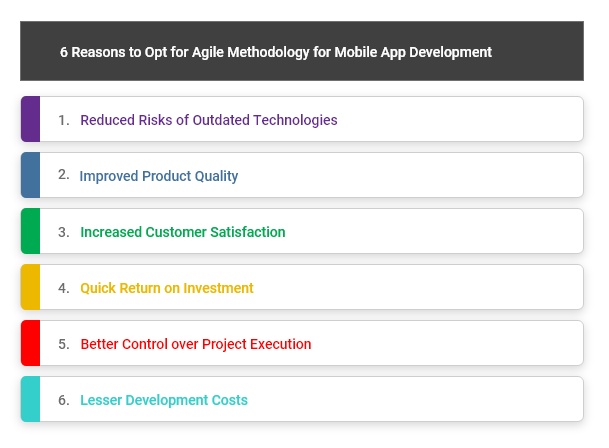
The agile software development life cycle is much more complex when developing mobile applications. Why you may ask. Simply because a mobile application cannot sustain itself for a good number of years without an upgrade, unlike a desktop application that you may use for PCs.
You must continuously evolve the app to upgrade the mobile applications on time and provide your users with a state-of-the-art experience. You require your teams to function at maximum flexibility to deliver expected outcomes. And this is precisely where agile app development comes in.
Agile methodology for app development lets team members adapt to changing workflows smoothly for making app improvements and adding new features.
Clearly, agile methodology for mobile app development has some proven benefits to its credit.
Here are the top six reasons you should choose agile mobile app development for your projects.
1. Reduced Risks of Outdated Technologies
Imagine if the market rapidly evolves while you are developing an application. What happens to the data that you were working with? Can you call it up-to-date? Certainly not. It has become outdated. If you continue developing your app based on this data, it would only lead to poor ROI or a failed project.
However, implementing an agile methodology for mobile app development allows you to change workflows at any development stage. This enables an organization to make changes to any sprint with less resistance.
Plus, developing in sprints lets you test if the product in the making is going as planned. This way, you can avert absolute project failure and deliver a product in demand.
2. Improved Product Quality
We need to focus on quality to ensure a long life span for an application. The agile app development process integrates testing during the development cycles, which means there are regular checkups of the product during its development. It helps us know whether the product features are functioning well. This ultimately reduces the risk of facing any issues at the time of quality testing of the whole project.
In addition, the development process includes working in incremental cycles or sprints. This allows for minor incremental releases, with each release built on the previous functionality. Thus, mobile app developers can assess a project in real time and at each stage of the development process, making changes as required. Thus, each release ensures that the application quality is maintained.
3. Increased Customer Satisfaction
The basic principle of any agile applications development is to ensure proper communication between clients and the development team. This allows the development team to work closely with their clients and understand their vision.
Besides, you demonstrate the projects to the clients in different sprints. This brings transparency to the process. The client is involved throughout the process, granting them the flexibility to implement changes. Thus, it implies high customer satisfaction.
4. Quick Return on Investment
The agile application development methodology is iterative, meaning the features are delivered incrementally in rapid cycles. Thus, you can realize the product’s benefits early while it is still developing.
The iteration system makes it easy for businesses like yours to test their idea, collect data and insights, and then deliver the best features per the market’s latest trends. Its ability to gauge customer reaction and adjust accordingly keeps you ahead of the curve. This helps you make better decisions and fetch higher ROIs consistently.
5. Better Control over Project Execution
You can easily control every step of agile mobile app development with short sprints.
Since you divide the whole project into multiple individual modules, you can assign tasks to different teams. It reduces the dependencies and discussions at the inter-team level.
Furthermore, the role of a project manager within a sprint is to ensure you perform every activity as per the proposed plan. This helps detect any errors and rectify them at the earliest. Not only that, but it also helps keep a check on the productivity of each team member.
6. Lesser Development Costs
Another significant benefit of using the agile methodology for mobile app development is that it allows you to have a calculated cost for making an app. Since you plan every step, there is no or lesser chance of surprise expenses. The team can set the budget aside according to the plan and work efficiently.
Moreover, you can quickly raise the app budget between the projects if you need to do so. Thus, the agile methodology ensures that you do not abandon any project due to the lack of required funds or resources.
Read Also: How to Implement Strategic Alignment In Project Management
Scale at Speed with Agile Methodology for Mobile App Development
Infusing changes in execution midway through the project is never easy. But with agile methodology for mobile app development, you can develop sustainable, high-quality mobile apps effortlessly. This helps you, as a business, offer the latest solutions to your target audience when they need them the most, whether you’re looking to make an app or enhance existing ones.
So you can mold strategies and adapt to the new workflows and processes in real-time. This enables you to set out on the best path of project execution regardless of which stage a project is in. Also, customers can get involved in the process closely, facilitating faster decisions and early release of the product in the market.
Let’s take a look at some of the frequently asked questions about how choosing the best project management app can help boost the efficiency of your mobile development projects:
Q. What ways do agile project management software help mobile app development projects?
There are so many ways an agile project management software can help mobile app development projects, such as:
- Streamline workflow by tracking all mobile development projects on a single dashboard
- Boost team communication via task comments, shared calendar, file sharing, and notifications
- Monitor and improve overall company performance by generating insightful reports
Q. How can agile project management software help improve team performance?
Let’s take the example of ProProfs Project. You can generate detailed reports that include all project details, ranging from time spent on each project to whether the project deadline was met. So, with this information, it becomes easy to monitor team performance, analyze the pain points, and improve them efficiently.
Q. Can such software also be used for remote teams?
Yes. The best part about agile project management software, such ProProfs Project, is that with only one tool you can achieve a lot.
FREE. All Features. FOREVER!
Try our Forever FREE account with all premium features!

